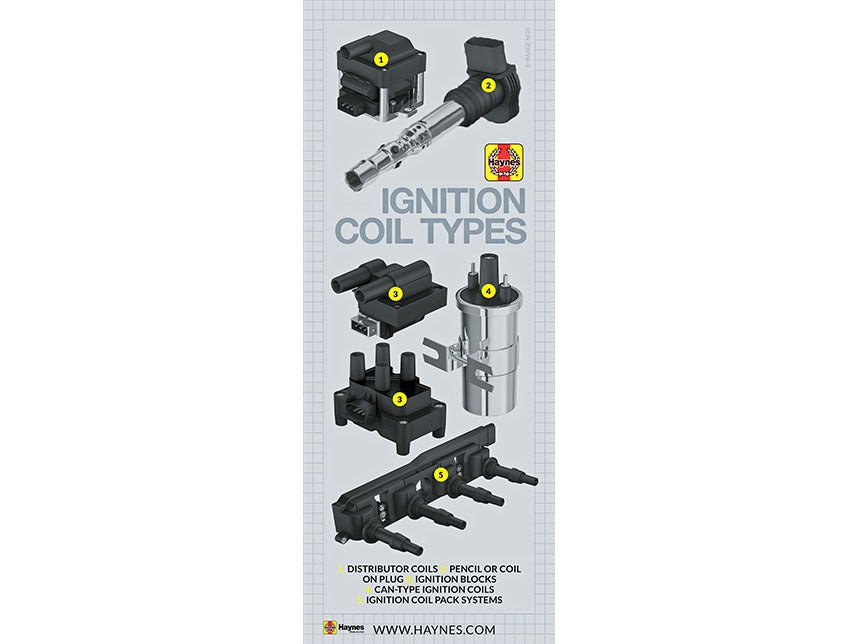If you’ve ever experienced your car sputtering, struggling to start, or noticed a sudden dip in fuel efficiency, the culprit might be lurking under the hood in the form of a failing coil pack. These unassuming components are vital to your car’s ignition system, playing a crucial role in getting you from point A to point B smoothly and efficiently. But what is a coil pack on a car exactly, and why is it so important? Let’s delve into the world of ignition coil packs to understand their function, common issues, and how to recognize when they might be causing you trouble.
Decoding the Ignition Coil: The Heart of Your Car’s Spark
At its core, an ignition coil pack is a critical component of your car’s ignition system. Its primary job is to take the relatively low 12-volt electrical current from your car’s battery and dramatically amplify it. This boosted voltage, reaching levels as high as 45,000 volts, is then sent to the spark plugs. This high-voltage surge is essential to create the spark that ignites the air-fuel mixture within each engine cylinder, initiating the combustion process that powers your vehicle. Think of the ignition coil as a transformer, stepping up the voltage to the level needed to jump the gap in a spark plug and ignite the engine’s fuel.
Why is a Coil Pack Essential for Engine Function?
Without a properly functioning coil pack, your engine simply wouldn’t run. The spark plugs require an extremely high voltage to overcome the pressure within the combustion chamber and effectively ignite the air-fuel mixture. If the coil pack is weak or failing, it might not deliver sufficient voltage consistently. This can lead to a misfire, where the spark plug fails to ignite the mixture in one or more cylinders. A misfire can cause a range of problems, from rough idling and reduced power to increased fuel consumption and potential damage to the catalytic converter. Therefore, understanding what a coil pack on a car does highlights its indispensable role in the combustion process and overall engine performance.
Exploring Different Types of Coil Packs
The appearance and location of coil packs have evolved over time with advancements in automotive technology.
In older vehicles equipped with a distributor ignition system, you’d typically find a single, cylindrical coil, often referred to as a canister-type coil. This coil would be connected to the battery and the distributor via wires. Some systems, like the General Motors High Energy Ignition (HEI) distributor, integrated the coil directly into the distributor cap.
However, modern vehicles predominantly utilize distributorless ignition systems, often featuring multiple coil packs. These can be configured in various ways:
- Coil-on-Plug (COP): In this design, individual coil packs are mounted directly on top of each spark plug. This eliminates the need for spark plug wires, resulting in a more efficient and direct voltage delivery.
- Coil Packs with Short Leads: Some systems use boxy coil packs mounted on the fender, firewall, or engine itself, with short spark plug wires connecting them to the spark plugs.
- Cassette or Rail Coils: These are coils constructed in series, often referred to as cassette coils, sequence coils, or coil rails. These configurations streamline the ignition system and are commonly found in multi-cylinder engines.
Understanding these different types helps in locating and identifying the coil packs in your specific vehicle.
 A simple guide to your car
A simple guide to your car
Alt text: Diagram illustrating different types of car coil packs including coil-on-plug and remote mounted coil packs, highlighting their placement in the engine ignition system.
Locating the Coil Pack: Where is it in Your Car?
The location of the coil pack depends largely on the age and ignition system of your vehicle.
In older cars with distributors, the coil pack is usually mounted on the firewall or engine bay, near the distributor. The distributor then routes the high voltage to each spark plug via spark plug wires.
Modern cars, equipped with electronic ignition systems controlled by the engine computer (ECU), often have coil packs located much closer to the spark plugs. In many cases, as with coil-on-plug systems, the coil pack sits directly atop the spark plug, eliminating the need for lengthy spark plug wires. This shift towards distributorless systems and direct coil placement is a key evolution in ignition technology. Modern engines can have multiple coil packs, sometimes one for each cylinder or paired for multiple cylinders.
How Coil Packs Generate High Voltage: The Science Behind the Spark
Coil packs operate on the principle of electromagnetic induction, utilizing a step-up transformer. Inside each coil pack are two sets of wire windings – the primary winding and the secondary winding – wrapped around a central core and encased in insulation.
The primary winding receives the low voltage from the car battery. This flow of current creates a magnetic field around the primary winding. When the ignition system or ECU interrupts this current flow, the magnetic field collapses rapidly. This collapse induces a much higher voltage in the secondary winding, which has thousands more windings than the primary. This high-voltage surge is then directed to the spark plug, creating the spark needed for combustion. For a deeper dive, resources like the Wikipedia article on transformers can provide a more detailed understanding of this process.
Why Coil Packs Fail: Common Causes of Malfunction
Coil packs are subjected to a harsh environment under the hood. The intense heat and vibrations of the engine bay take their toll over time, contributing to common coil pack failures.
- Heat and Vibration Degradation: Prolonged exposure to high temperatures and engine vibrations can degrade the coil’s internal windings and insulation. Breakdown of the insulation can lead to internal shorts, limiting the coil’s ability to step up voltage effectively.
- Cracked Casings and Moisture Intrusion: The insulated casing of a coil pack can develop cracks over time. These cracks allow moisture to penetrate the coil, causing intermittent short circuits in the windings and leading to rough engine running, especially in damp conditions.
- Overload from Worn Spark Plugs or Damaged Wires: Worn spark plugs with excessively wide electrode gaps or damaged spark plug wires (in systems that use them) increase the voltage demand on the coil pack. This increased demand can cause the coil to overheat and eventually short circuit, leading to failure.
Understanding these failure modes can help in preventative maintenance and quicker diagnosis.
Diagnosing a Faulty Coil Pack: Recognizing the Symptoms
A failing coil pack can manifest in a variety of noticeable symptoms. These include:
- Engine Misfires: This is a common symptom, often felt as a hesitation or jerking during acceleration.
- Engine Backfires: Unburnt fuel igniting in the exhaust system can cause loud backfires.
- Difficulty Starting: A weak spark can make it harder for the engine to start, especially in cold weather.
- Reduced Engine Power: Misfires and incomplete combustion lead to a decrease in overall engine performance.
- Increased Fuel Consumption: Inefficient combustion due to misfires can result in using more fuel.
- Smell of Unburnt Fuel: Misfires can lead to unburnt fuel entering the exhaust system, producing a noticeable odor.
In older, distributor-based ignition systems, a failing coil might affect all spark plugs. However, in modern cars with computer-controlled, multi-coil systems, a problem may initially affect only one cylinder or a pair sharing a coil, making diagnosis more targeted. Misfires that are more pronounced in damp weather or under temperature extremes can often point to a marginal coil pack issue.
Cars manufactured after 1996 are typically equipped with OBD-II (On-Board Diagnostics II) systems. These systems can detect misfires and trigger the “check engine light.” Diagnostic tools can read OBD-II codes, often revealing codes like P030X (where X is the cylinder number) indicating a misfire in a specific cylinder. However, remember that misfires can have various causes beyond coil packs.
To diagnose a coil pack, inspect spark plugs and wires (if applicable). Look for cracks or damage on the coil pack itself. A useful troubleshooting step in multi-coil systems is to swap the coil pack from the suspected misfiring cylinder with a known good coil from another cylinder. If the misfire code shifts to the cylinder where the coil was swapped, it strongly suggests a faulty coil pack.
Replacing a Bad Coil Pack: A DIY Task
Fortunately, replacing coil packs is often a straightforward task that many DIY mechanics can undertake. Once you’ve located the coil packs (usually by removing the engine cover), replacement is typically simple. Each coil pack is usually secured with a screw or small bolt. Remove the bolt, gently pull, and the coil pack should pop off.
It’s important to note that there’s no way to repair a defective coil pack; replacement is the only solution. However, the relatively low cost of replacement coil packs, especially when caught early, makes this a manageable repair, helping to restore your vehicle’s performance and efficiency.
